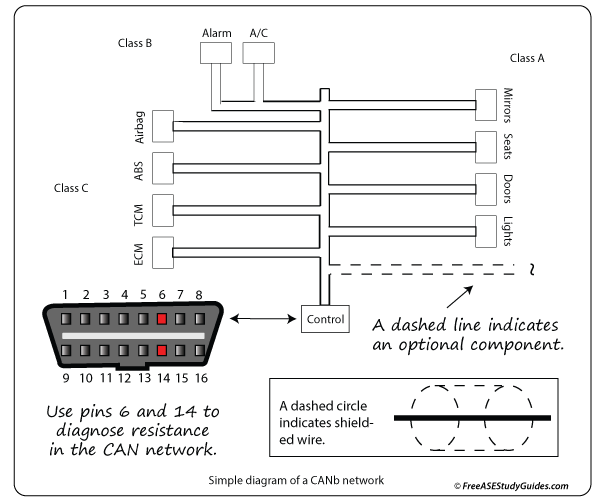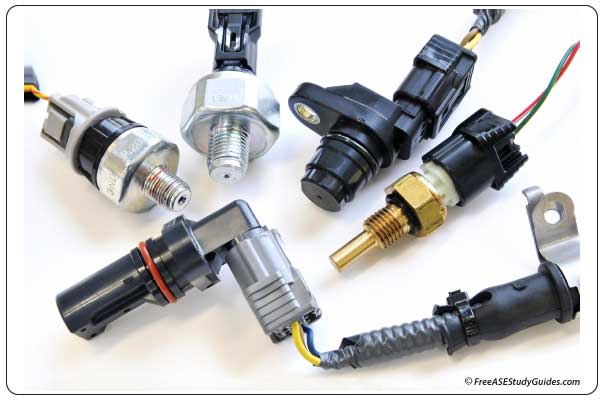(TCM) Transmission Control Module
The (TCM) transmission control module can be a standalone controller or located in the (PCM) powertrain control module. It receives input from sensors to activate the solenoids, the (TCC) torque converter clutch, control line pressure, and provide smooth shift timing. The TCM has preset data to compare these inputs and make the appropriate decision.

The TCM also receives information from sensors shared over the CAN multiplex network with the PCM. Sensors detect conditions such as movement or pressure and convert them into an electrical signal for the TCM.
Automatic Transmission Sensors

Brake switch: The brake switch signals the computer when the brakes are applied. The TCM uses this signal to control the TCC.
ECT: The engine coolant temperature sensor monitors engine coolant temperature. The TCM uses this input to delay the TCC application until the engine reaches operating temperature.
MAF: The mass airflow sensor informs the PCM of engine load. It senses the airflow mass in the air tube before entering the intake manifold. The TCM uses this information for shift timing, line pressure, and TCC application.
TPS: The throttle position sensor informs the PCM of the throttle angle. The TCM uses this information to control shift timing. At (WOT) wide-open throttle, the TCM downshifts.
TFT: The transmission fluid temperature sensor is located inside the transmission. The TCM uses this information to monitor the transmission's fluid temperature.
TSS: The turbine shaft speed sensor informs the TCM of the turbine shaft speed.
OSS: The output shaft speed sensor informs the TCM of the output shaft speed. It's compared to the (VSS) vehicle speed sensor's signal to monitor performance.
Pressure Sensors: The TCM uses these sensors to verify that the desired hydraulic circuit is under pressure.
The TCM uses these inputs to make decisions and activate actuators like shift solenoids, the TCC solenoid, EPS solenoid, and coast-timing solenoids.